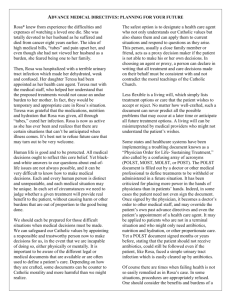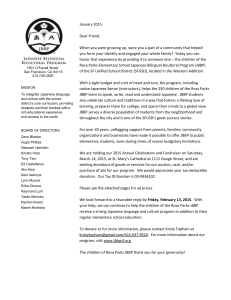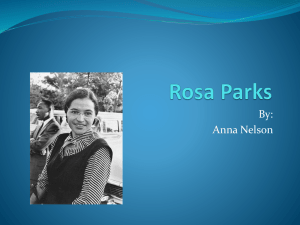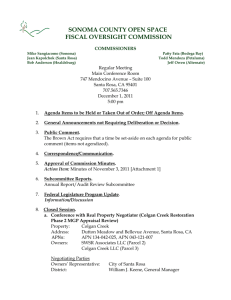Syllabus - CourseWork
advertisement
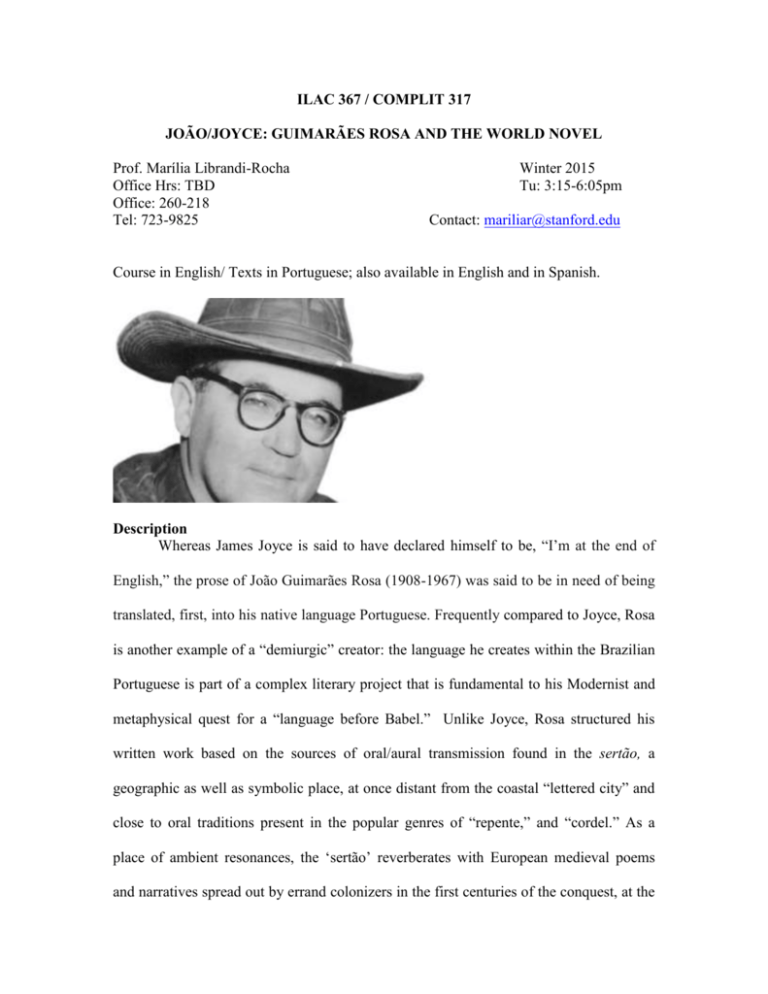
ILAC 367 / COMPLIT 317 JOÃO/JOYCE: GUIMARÃES ROSA AND THE WORLD NOVEL Prof. Marília Librandi-Rocha Office Hrs: TBD Office: 260-218 Tel: 723-9825 Winter 2015 Tu: 3:15-6:05pm Contact: mariliar@stanford.edu Course in English/ Texts in Portuguese; also available in English and in Spanish. Description Whereas James Joyce is said to have declared himself to be, “I’m at the end of English,” the prose of João Guimarães Rosa (1908-1967) was said to be in need of being translated, first, into his native language Portuguese. Frequently compared to Joyce, Rosa is another example of a “demiurgic” creator: the language he creates within the Brazilian Portuguese is part of a complex literary project that is fundamental to his Modernist and metaphysical quest for a “language before Babel.” Unlike Joyce, Rosa structured his written work based on the sources of oral/aural transmission found in the sertão, a geographic as well as symbolic place, at once distant from the coastal “lettered city” and close to oral traditions present in the popular genres of “repente,” and “cordel.” As a place of ambient resonances, the ‘sertão’ reverberates with European medieval poems and narratives spread out by errand colonizers in the first centuries of the conquest, at the same time as it preserves linguistic forms from the first language contacts between native indian tribes, colonizers and African groups: the ‘Lingua Geral,’ spoken in Brazil from 1550’s to 1750, together with the Amazonian “Nheengatu”, as well as words and rythms of Bantu African languages. As a place of freedom and escape for Indigenous, AfroAmericans, and mestizos, the ‘sertão’ became a literary topos in Brazilian history, and it received a renovated avant-garde impulse in Rosa’s fictional prose. His knowledge of several languages, which he playfully incorporated into his prose, and his work and travels as a diplomat, contributed to the creation of his world/planetary literature. This course proposes an interpretation of Rosa’s work through the analysis of the strangeness of the sertão, and the paradoxical effect this setting has on Rosa’s fiction. In fact, to understand Rosa’s work, readers need to enter into an analogical conception where “everything is and is not” at the same time (disturbing gender, racial, philosophical and literary divisions.) For instance, a paradox is created by an at once un-lettered and hypercultured literature, which is (and is not) written in Portuguese, which is (and is not) autoclassified as a novel, a novella, or a short story or a poem, in a constant “mouvance.” To show how these paradoxical conjunctions work, this course proposes a close reading and a comparative analysis of Rosa’s fiction, with a special attention to his magmatic novel Grande Sertão-Veredas (1956). Interpreters have compared GS:V to the great proponents of the epic tradition, going from the Ramayana to Homer, Dante, and Goethe, to the novels of Cervantes, Goethe, Thomas Mann, Celine, and Joyce. And, yet, the work of this “Brazilian literary giant,” (Lou Daniel, 1995), is still largely unknown (or un-read) outside the field of Brazilianist studies, specially in the Anglo-American field, mainly due to problems with translation and a lack of more critical interpretations that would promote his work. The work of Rosa offers a unique perspective to Translation studies, and to World Literature and Cosmopolitanism debates. Students will increase their literary vocabulary with “untranslatable” terms such as ‘nonada,’ ‘recado,’ ‘conconversa,’ ‘Terceira margem,’ and ‘travessia.’ Moreover, a gallery of impressive characters will became part of their world literary repertoire, such as Riobaldo and Diadorim, Chefe Zequiel, Maria Mutema, Soroco, Miguilim, Jó Joaquim, Cara de Bronze, as well as the multiple doubles of the author himself like ‘Moimechego’ (moi, me, ich, ego). Finally, this course pays homage to Stanford Professor, James L. Taylor, who, together with Harriet the Onís, was the first American translator of Rosa’s masterpiece, launched by Alfred Knopf in 1963. Week 1. Jan. 8. Introduction. Texts by João Adolfo Hansen; Marília L-Rocha (English/Portuguese), Piers Armstrong, Sandra Vasconcelos on CW Week 2. Jan. 15. The reception of J.G. Rosa. Secondary: Rosa’s International Reception (U.S; France, Germany, Italy, Spain, Czech…): Texts by Rosas’ translators: David Treece (U.K), Harriet de Onis (US), MeyerClason (Germany), Edoardo Bizarri (Italy). (from the book JGRWeek 3. Jan. 22. Rosa’s short stories. Primary: “The Third Bank of the River;” “Desenredo;” “Pirlimpsiquice”: the “Third Margin”, The witz of a Love Story (intertexts w/ Joyce); and Performance. Secondary: The book of Jo; Texts by Freud (Witz), Andre Jolles (Witz), J.Derrida, J.M.Wisnik. Film: Mutum. Week 4. Jan. 29 . Grande Sertão:Veredas (and the structure of the Novel) Week 5. Feb. 5. Grande Sertão:Veredas (Time and Timber: the letter of Nhorinhá and the case of Maria Mutema) Week 6. Feb. 12. Grande Sertão:Veredas (and the Faustian Pact) Week 7. Feb. 19. Grande Sertão:Veredas (and the Body of Diadorim: mysticalmetafictional; androgynous, homo/hetero love) Week 8. Feb. 26. Rosa’s Resonant Literature. “O Recado do Morro.” From babbling to Babel: Conconversation and Recado: Prophecy and Enigma. (The Congada feast and the Northern European saga) (Texts by R. Barthes, Jean-Luc Nancy, M. Bakhtin) Week 9. March 5. “Meu Tio o Iauaretê”: Rosa and the Antropophagous reason, TupiGuarani, Black communities (texts by Oswald de Andrade, Lucia Sá, Haroldo de Campos); Week 10. March 12. Conclusion. After Rosa: Zumthor in the Sertão; Rosa in Leminski’s Catatau, and in Galaxias; Rosa in Lusophone Africa with Luandino Vieira and Mia Couto. Requirements: Each member of the seminar will give one presentation during the term, introducing a text from the syllabus, providing a bibliography of relevant secondary sources, and initiating the discussion; will participate in conversation throughout the term; and will produce a substantial research paper, due no later than Thursday, March 19. (Grades due: March 24) (If enrolled for 4 or 5 units) A final research paper of 4000 words (ca. 16 pp.) for 4 units or of 5000 words (ca. 20 pp.) for 5 units, plus full critical apparatus (bibliography and notes). On the last day of class each student will give a ten-minute presentation about her/his final paper. The paper need not be fully developed at this time, but the major issues, argument, and relevant sources should be clear. 4-5 units: contribution to classroom discussion (20%); oral presentation (20%); research paper + final presentation (60%) (If enrolled for 3 units) A write-up or discursive outline of the oral presentation. On the last day of class, each student will discuss how the work done for this course fits into his/her itinerary toward the Ph.D. 3 units: contribution to classroom discussion (40%); oral presentation + write-up (60%) Attendance to at least ten of our eleven meetings is required. Because participation is essential for a graduate seminar, more than one absence will lead to a failing grade.


